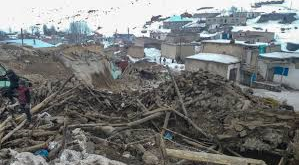Annual deaths from poor air have increased by 20 per cent since 1990
More than 95 per cent of the world’s population are breathing dangerously polluted air, with those in developing countries at considerably greater risk, facing a double whammy of breathing unsafe air both inside the home and out.
The air quality crisis has gained greater recognition as the impact of air pollution has been better quantified. Total air pollution was responsible for 6.1 million deaths in 2016, with ambient (outdoor) air pollution being the largest contributor, accounting for 4.1 million deaths, according to a large-scale study by the Health Effects Institute.
The problem is getting a lot worse as the Earth’s population has rapidly urbanised. Global deaths linked to ambient air pollution are estimated to have increased by 19.5 per cent from 3.3 million in 1990.
It means air pollution has become the 4th highest cause of death among all health risks, exceeded only by high blood pressure, diet, and smoking.
The report used new technology including satellite data in conjunction with greater levels of pollution monitoring, to assess the impact of air pollution across the globe.
Air pollution is a complex mixture of particles and gases which differs from region to region and even within cities, but fine particulate matter (PM2.5) is the measure used as the chief indicator of pollution levels.
It report says an estimated seven billion people, 95 per cent of the earth’s population, live in areas where (PM2.5) exceeds the World Health Organisation’s air quality guidelines, and that 60 per cent live in places where fine particulate matter exceeds even the least stringent WHO air quality targets.
The problem is most acute in Asia, with India and China accounting for over half (51 per cent) of all global deaths from ambient air pollution.
The report includes studies to identify the major sources of air pollution in these two countries.
Researchers found in China that coal-burning in industry, for power and for residential heating was the largest contributor to outdoor air pollution, followed by transport, residential biomass (solid fuel) burning, non-coal industry and open burning of agricultural land.
In India, the largest overall source of outdoor air pollution is from residential biomass burning, followed by coal-burning.
The report separately assesses levels and impacts of household air pollution, and points out that over a third of the planet’s population is exposed to pollution in the home where fine particulate matter can exceed air quality guidelines by as much as 20 times.
Despite the grim overall picture, China’s ambient air pollution has begun to see declines in recent years, as the government moves to tackle coal combustion. But in contrast, Pakistan, Bangladesh, and India have experienced the steepest increases in air pollution levels since 2010.
“Air pollution takes a huge personal toll worldwide, making it difficult to breathe for those with respiratory disease, sending the young and old to hospital, missing school and work, and contributing to early death” said Bob O’Keefe, Vice President of HEI. “The trends we report show real progress in some parts of the world – but serious challenges remain to eliminate this avoidable affliction,” he added
The Independent
 Lebanese Ministry of Information
Lebanese Ministry of Information



